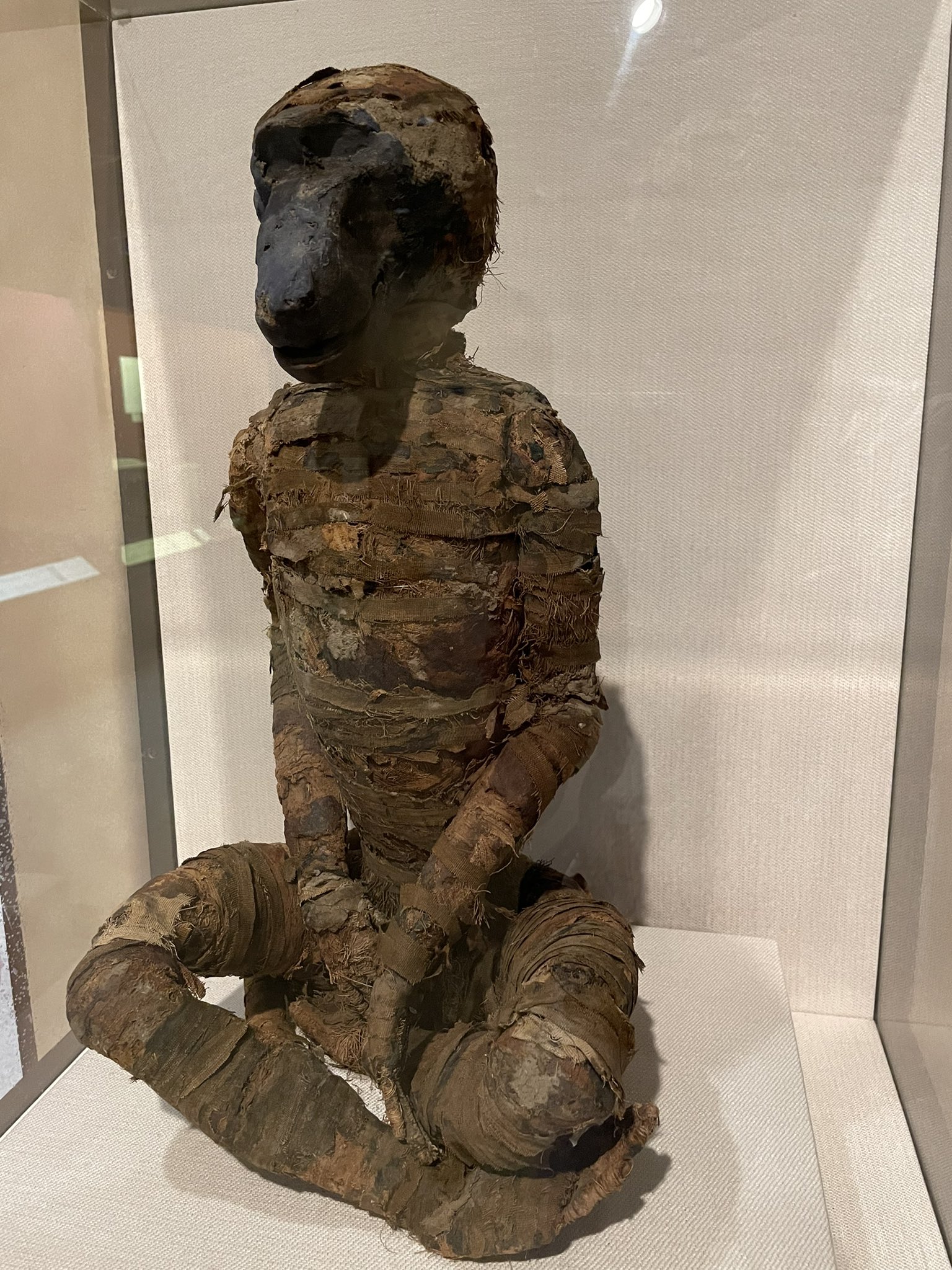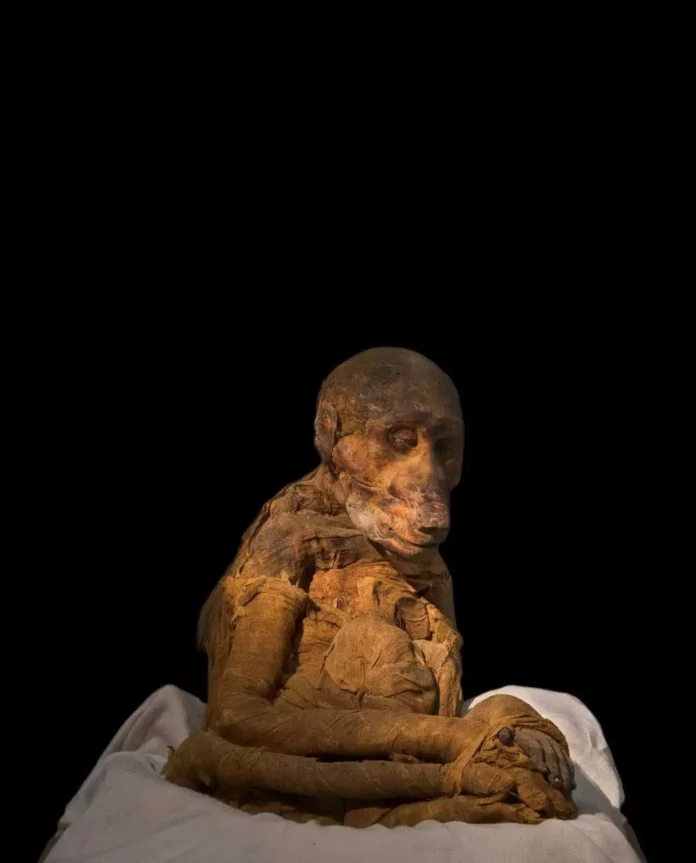In 1906, during an excavation near the Tomb of Amenhotep II in Egypt, a remarkable discovery was made by Mr. Theodore M. Davis. Unearthed from Tomb (KV51) was the mummified remains of a baboon. Seated with its knees drawn up and tail curved around its body, this baboon mummy provides valuable insights into the ancient Egyptian practice of animal mummification. Through radiographs and careful examination, researchers have uncovered intriguing details about the preservation methods and cultural significance of such relics.
The Enigmatic Mummy: An Unusual Preservation Technique

Unlike the typical evisceration through enema method used in mummifying animals, the baboon appears to have been mummified through an enlarged cut in the anal area. Radiographs reveal that large packets containing soil were inserted into the animal’s torso, helping to maintain its original shape. Traces of resin, natron, and exterior bandages are still visible on the mummy, showcasing the meticulous preservation techniques employed by the ancient Egyptians.
The Votive Function of Animal Mummies
While some domestic animals were mummified by their owners to accompany them in the afterlife, the majority of animal mummies served a votive function. Pilgrims visiting Egyptian temples would offer mummified animals associated with specific deities as a form of devotion. Different animals were linked to different gods and goddesses such as Thoth/ibis or baboons, Bastet/cats, Anubis/dogs, Sobek/crocodiles, and Horus/hawks. Necropolises dedicated to these animals were established, and animal mummies were buried there.
Exploring Vast Necropolises and Mapping Egyptian Fauna

Recent discoveries of vast necropolises filled with mummified animals have provided researchers with unprecedented opportunities to study embalming techniques and gain insights into Egypt’s diverse fauna. Tomographic scans have played a crucial role in analyzing these relics, shedding light on the methods used for preservation. These scans not only aid in understanding the embalming process but also contribute to creating a comprehensive map of the animals present in ancient Egypt.
The Symbolism of the Sacred Baboon
The sacred baboon (Papio hamadryas) held great significance in ancient Egyptian art and religion. It was often associated with Thoth, the deity representing the moon and wisdom. The image of a seated male baboon, with hands on knees and sometimes adorned with a lunar disc or crescent, became an enduring symbol for over 3000 years. This apotheosis of a nonhuman primate is a rare occurrence in ancient cultures.
Artistic Realism and Ecological Surveys

The consistent portrayal of seated baboons in ancient Egyptian art, even spreading to other regions like the Levant and the Mediterranean, suggests that the artists were concerned with species-level realism. Some ecologists view the artistic depictions as a biological survey, providing insights into the stability of ancient Egyptian ecosystems over time. The accuracy of the artistic representations serves as a testament to the intimate knowledge that ancient Egyptians had of their natural surroundings.
The mummy of the baboon discovered near the Tomb of Amenhotep II unveils the intricate process of animal mummification in ancient Egypt. This unique preservation technique, coupled with the votive function of animal mummies, offers a glimpse into the religious practices and cultural beliefs of this ancient civilization. Moreover, the symbolism of the sacred baboon highlights the reverence Egyptians had for certain animals, elevating them to divine status. As researchers continue to explore the vast necropolises and analyze the tomographic scans, the story of the baboon mummy contributes to our understanding of ancient Egyptian fauna and the artistic record that serves as a biological survey of the past.
